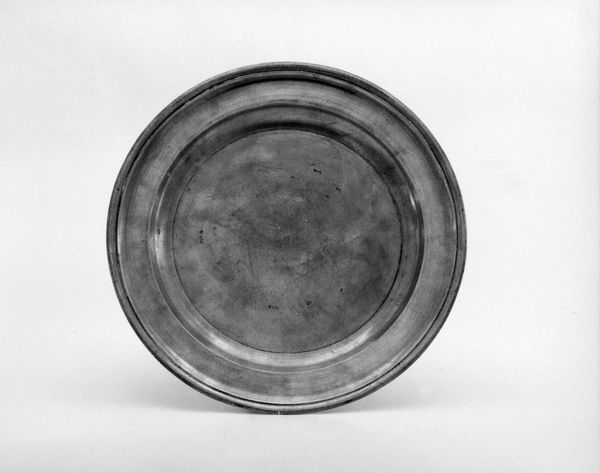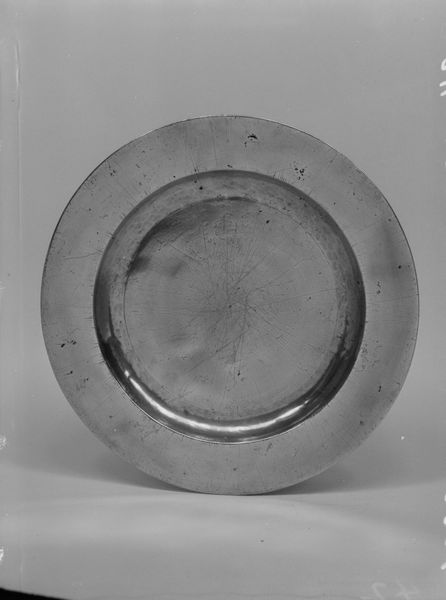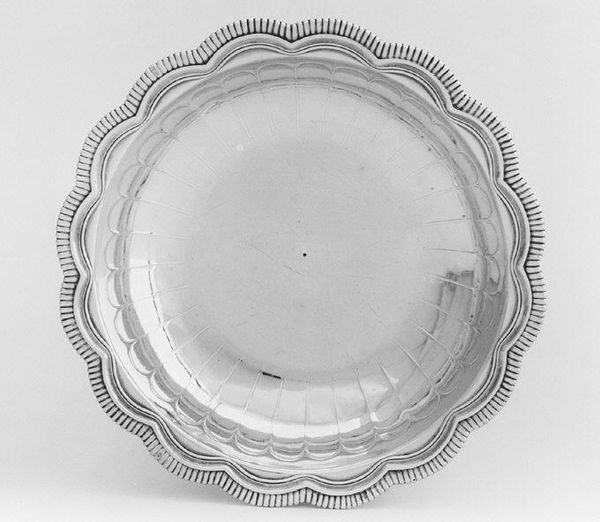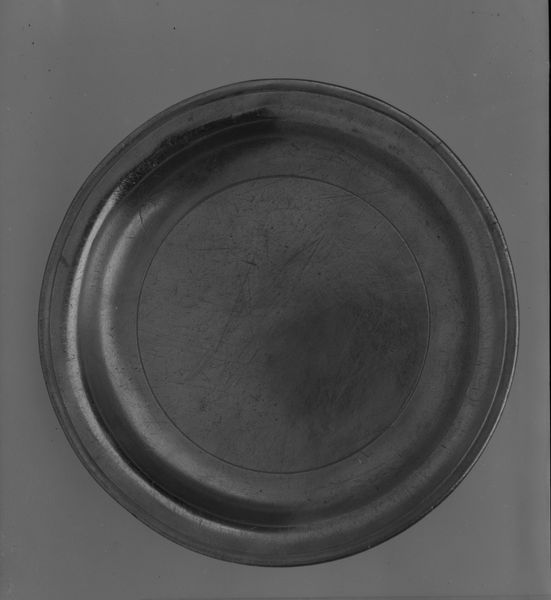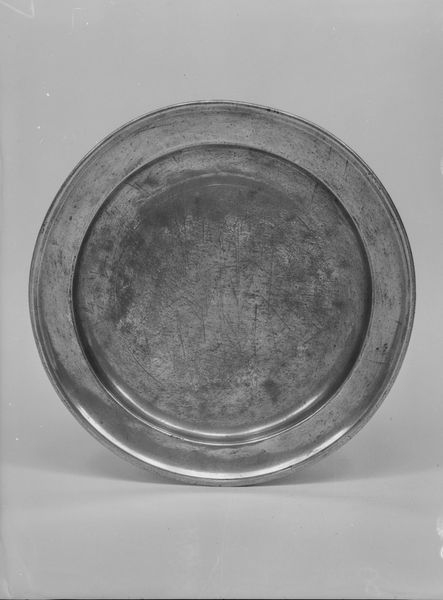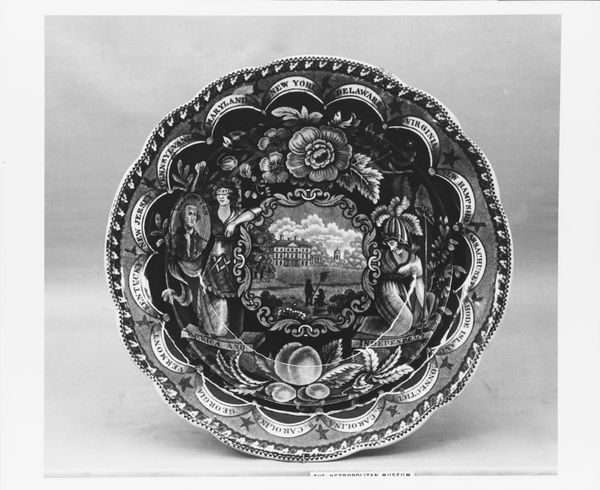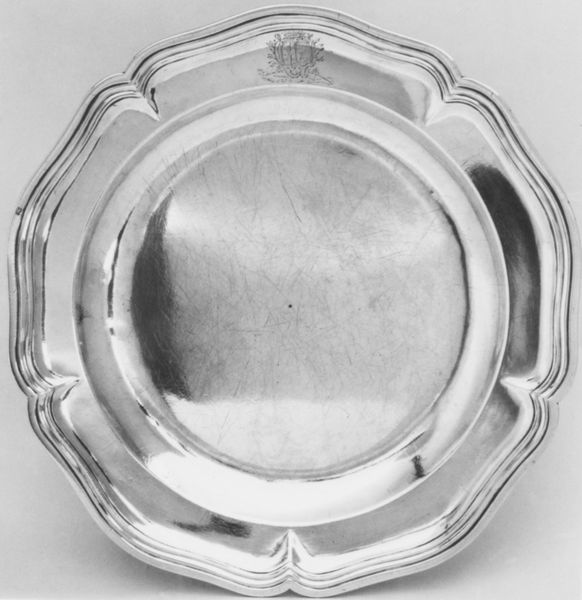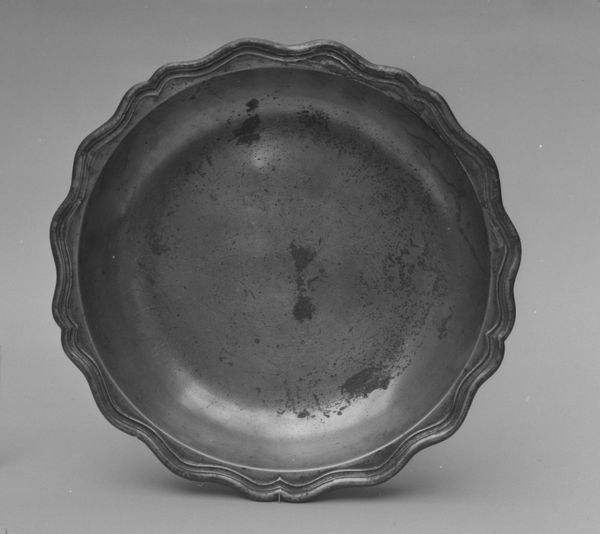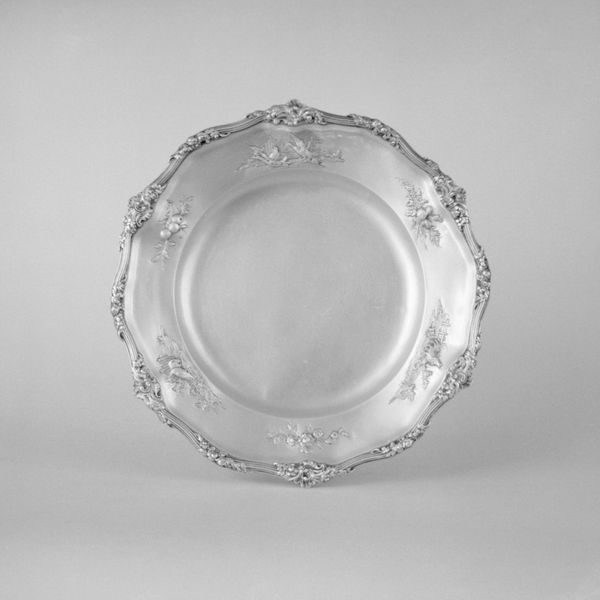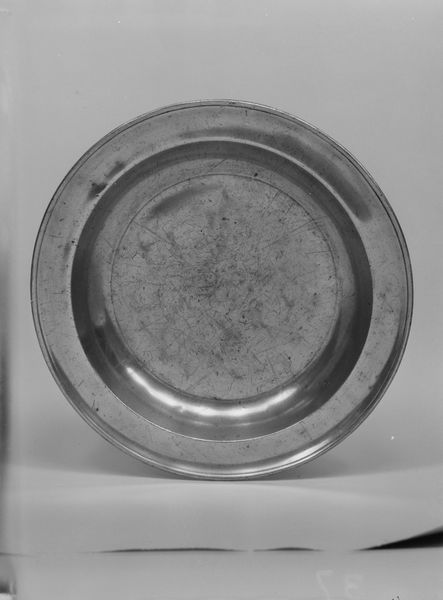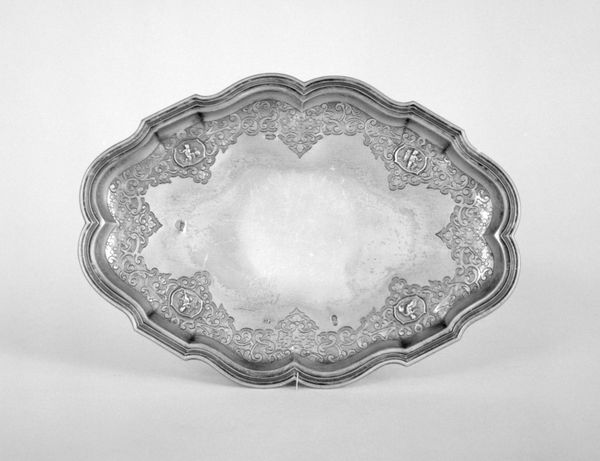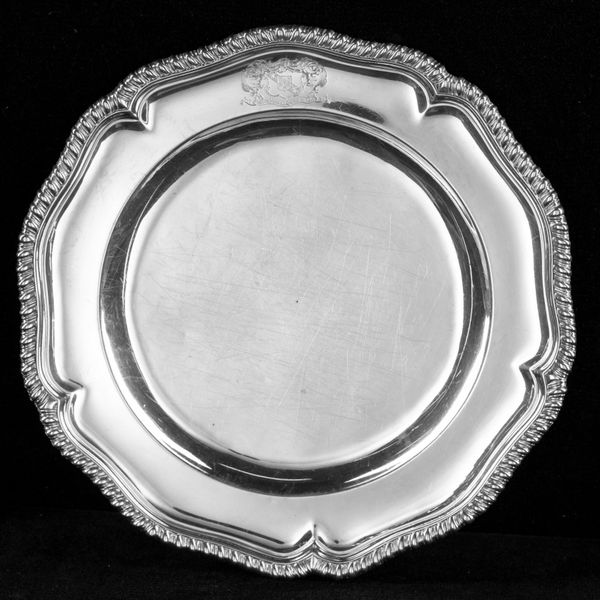
silver, sculpture
#
silver
#
baroque
#
sculpture
#
sculpture
Dimensions: Diameter: 9 1/2 in. (24.1 cm)
Copyright: Public Domain
Editor: Here we have the "Stand for écuelle," crafted between 1723 and 1727 by Johann Daniel Schöffler I. It's made of silver, currently held at the Metropolitan Museum of Art. It strikes me as incredibly ornate; I'm curious about what it signifies in its historical context. How do you interpret this piece? Curator: It's fascinating how much material tells us, isn’t it? Look at the silver itself. Its preciousness speaks of wealth, certainly, but also of the vast colonial networks that supplied it. Consider the labor involved – the mining, refining, the intricate craftsmanship by Schöffler. This stand isn't just a display of Baroque style, but a testament to a complex web of resource extraction and skilled labour. Do you think its function, as a stand for a soup bowl, diminishes its artistic value? Editor: Well, in a way, doesn’t that practicality highlight the connection between art and everyday life in that period? It wasn’t solely about aesthetic pleasure; it was functional and communicated status. Curator: Precisely! The Baroque period often blurred those lines. The “Stand for écuelle” prompts us to question the relationship between art, craft, and social status. Consumption itself becomes a key theme. Think about the culture of dining, the rituals around food that this object served. How does that change your understanding? Editor: It reframes it entirely! I initially saw it as just a beautiful object, but understanding its function, the silver trade, the labor…it becomes a window into a whole economic and social structure. Curator: It also challenges the idea of a singular artistic genius. While Schöffler is credited, the object’s existence depended on countless anonymous labourers, miners, and traders. By focusing on the material, we move away from romantic notions of individual creation and consider the larger systems at play. What do you think about that shift of focus? Editor: I agree completely. Focusing on the materials and process demystifies the artwork while adding a new layer of richness and complexity. Thanks! Curator: Absolutely. I found your initial read quite illuminating. By investigating materiality, the stand transforms into a potent source of socioeconomic commentary.
Comments
No comments
Be the first to comment and join the conversation on the ultimate creative platform.

